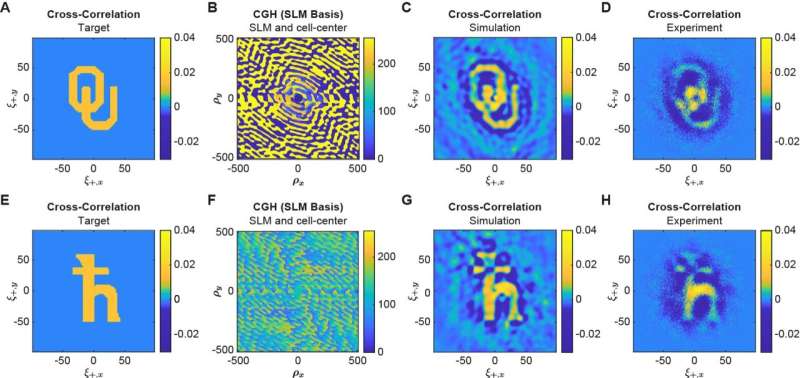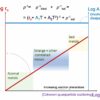Researchers at the University of Oklahoma led a study recently published in Science Advances that proves the principle of using spatial correlations in quantum entangled beams of light to encode information and enable its secure transmission.
Light can be used to encode information for high-data rate transmission, long-distance communication and more. But for secure communication, encoding large amounts of information in light has additional challenges to ensure the privacy and integrity of the data being transferred.
Alberto Marino, the Ted S. Webb Presidential Professor in the Homer L. Dodge College of Arts, led the research with OU doctoral student and the study’s first author Gaurav Nirala and co-authors Siva T. Pradyumna and Ashok Kumar. Marino also holds positions with OU’s Center for Quantum Research and Technology and with the Quantum Science Center, Oak Ridge National Laboratory.
“The idea behind the project is to be able to use the spatial properties of the light to encode large amounts of information, just like how an image contains information. However, to be able to do so in a way that is compatible with quantum networks for secure information transfer. When you consider an image, it can be constructed by combining basic spatial patterns know as modes, and depending on how you combine these modes, you can change the image or encoded information,” Marino said.
“What we’re doing here that is new and different is that we’re not just using those modes to encode information; we’re using the correlations between them,” he added. “We’re using the additional information on how those modes are linked to encode the information.”

Frames (A) and (E) show the target information to be encoded in the spatial cross-correlation of the twin beams. The target is used to calculate the corresponding CGH (B) and (F) with a MRAF algorithm. The dimensions of the SLM pixels (12.5 μm×12.5 μm) and its 8-bit resolution together with the f-to-f imaging system are taken into account to calculate the simulated cross-correlations in frames (C) and (G). The measured spatial cross-correlations between the probe and conjugate intensity fluctuations reveal the encoded information, as shown in frames (D) and (H). Except for frames (B) and (F), each pixel value is normalized to the sum of the amplitude squared of all the pixels in the image to provide a better comparison between the simulation and experiment. The maximum values for the cross-correlations of the experimental and simulated data are larger than for the target due to the non-uniform distributions that result from a non-ideal setup and CGH. One can notice a small rotation (∼ 5◦) in the measured spatial cross-correlations, which is due to experimental alignment imperfections. All figures, except for the CGH, are in the EMCCD pixel basis, with a pixel size of 16 μm×16 μm. The color bar for the CGH frames (B) and (F) correspond to the 8-bit encoding of the phase in the range of 0 to 2π. For a detailed explanation of the measurement procedure and calculation of the spatial cross-correlations. © Science Advances (2023). DOI: 10.1126/sciadv.adf9161
The researchers used two entangled beams of light, meaning that the light waves are interconnected with correlations that are stronger than those that can be achieved with classical light and remain interconnected despite their distance apart.
“The advantage of the approach we introduce is that you’re not able to recover the encoded information unless you perform joint measurements of the two entangled beams,” Marino said. “This has applications such as secure communication, given that if you were to measure each beam by itself, you would not be able to extract any information. You have to obtain the shared information between both of the beams and combine it in the right way to extract the encoded information.”
Through a series of images and correlation measurements, the researchers demonstrated results of successfully encoding information in these quantum-entangled beams of light. Only when the two beams were combined using the methods intended did the information resolve into recognizable information encoded in the form of images.
“The experimental result describes how one can transfer spatial patterns from one optical field to two new optical fields generated using a quantum mechanical process called four-wave mixing,” said Nirala. “The encoded spatial pattern can be


